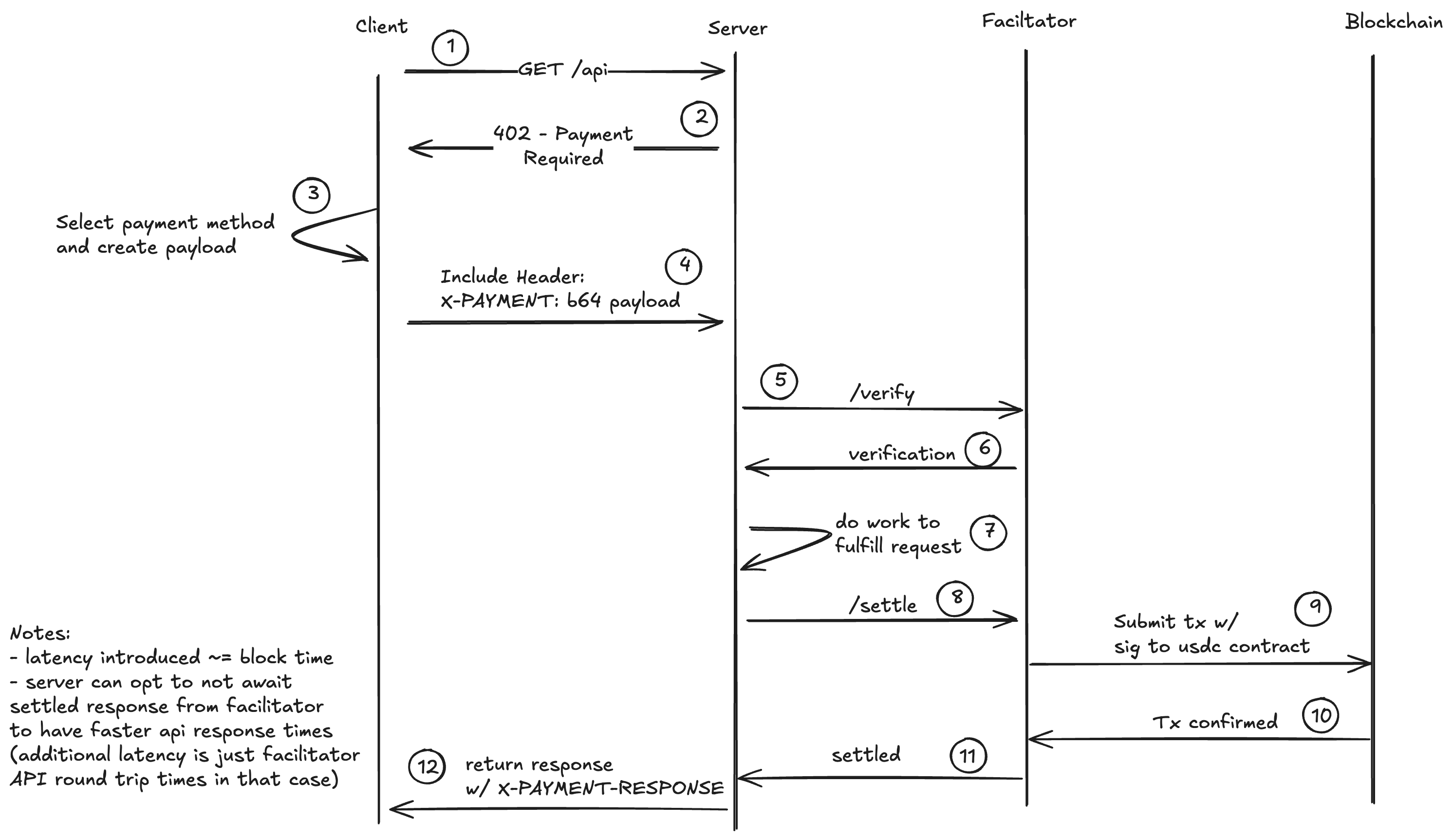Skip to main contentThis page explains the complete payment flow in x402, from initial request to payment settlement.
Overview
x402 enables programmatic payments over HTTP using a simple request-response flow. When a client requests a paid resource, the server responds with payment requirements, the client submits payment, and the server delivers the resource.
Payment Flow

Step-by-Step Process
-
Client makes HTTP request - The client sends a standard HTTP request to a resource server for a protected endpoint.
-
Server responds with 402 - The resource server returns an HTTP 402 Payment Required status code with payment requirements in the
PAYMENT-REQUIRED header.
-
Client creates payment - The client examines the payment requirements and creates a payment payload using their wallet based on the specified scheme.
-
Client resubmits with payment - The client sends the same HTTP request again, this time including the
PAYMENT-SIGNATURE header containing the signed payment payload.
-
Server verifies payment - The resource server validates the payment payload either:
- Locally (if running their own verification)
- Via a facilitator service (recommended)
-
Facilitator validates - If using a facilitator, it checks the payment against the scheme and network requirements, returning a verification response.
-
Server processes request - If payment is valid, the server fulfills the original request. If invalid, it returns another 402 response.
-
Payment settlement - The server initiates blockchain settlement either:
- Directly by submitting to the blockchain
- Through the facilitator’s
/settle endpoint
-
Facilitator submits onchain - The facilitator broadcasts the transaction to the blockchain based on the payment’s network and waits for confirmation.
-
Settlement confirmation - Once confirmed onchain, the facilitator returns a payment execution response.
-
Server delivers resource - The server returns a 200 OK response with:
- The requested resource in the response body
- A
PAYMENT-RESPONSE header containing the settlement details
Key Components
Why This Design?
The x402 protocol is designed to be:
- Stateless - No sessions or authentication required
- HTTP-native - Works with existing web infrastructure
- Blockchain-agnostic - Supports multiple networks through facilitators
- Developer-friendly - Simple integration with standard HTTP libraries
Next Steps
